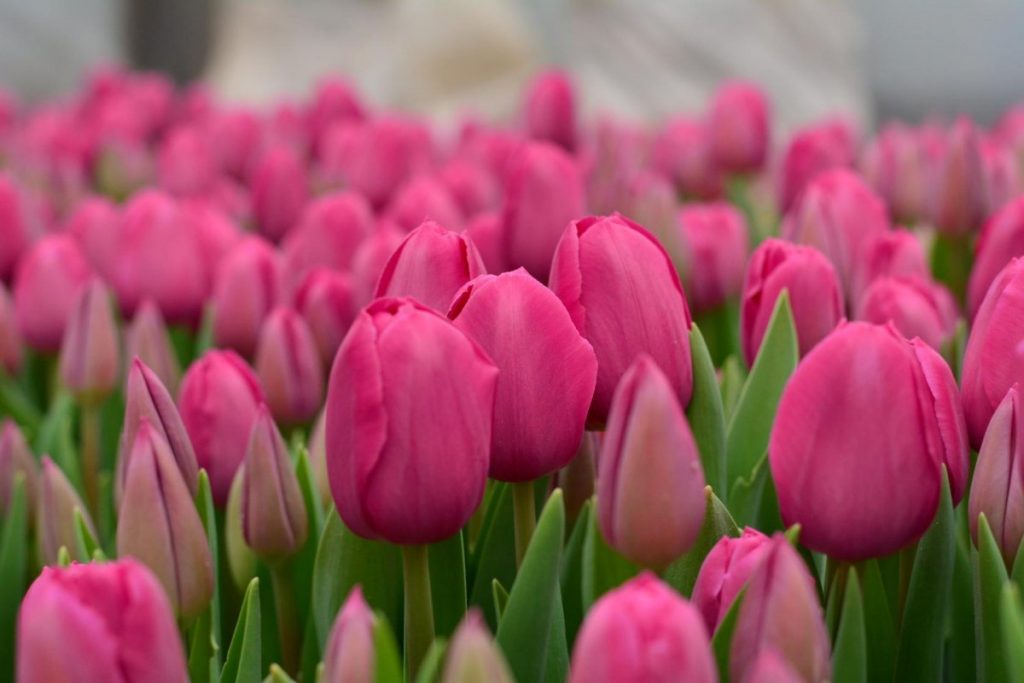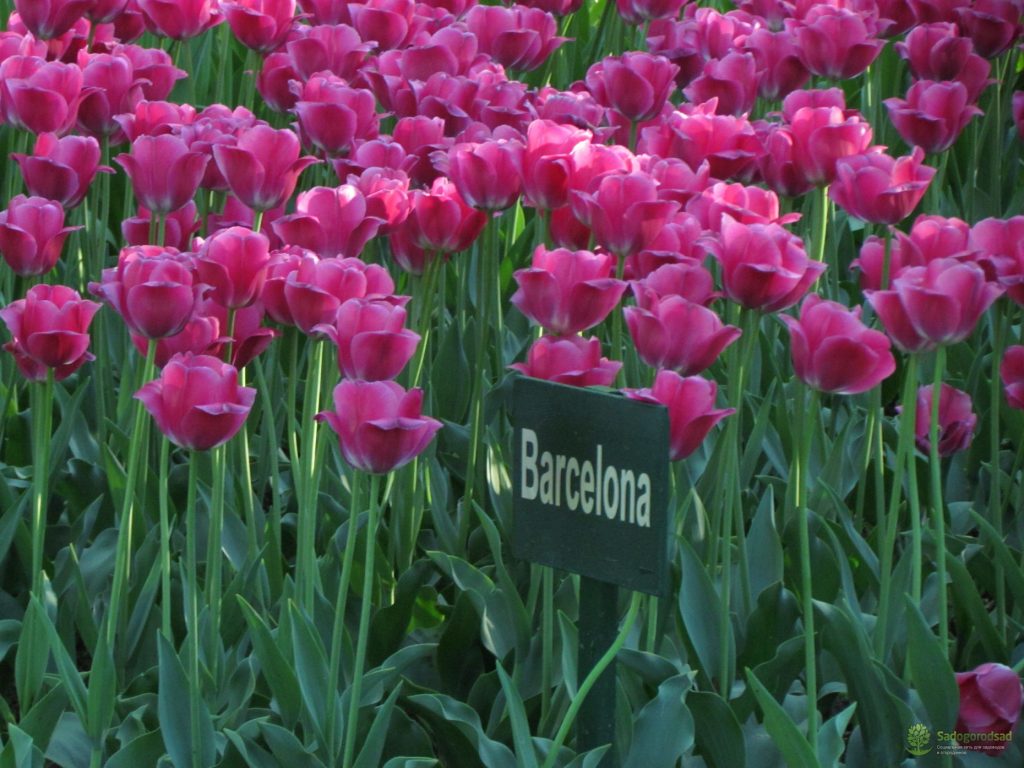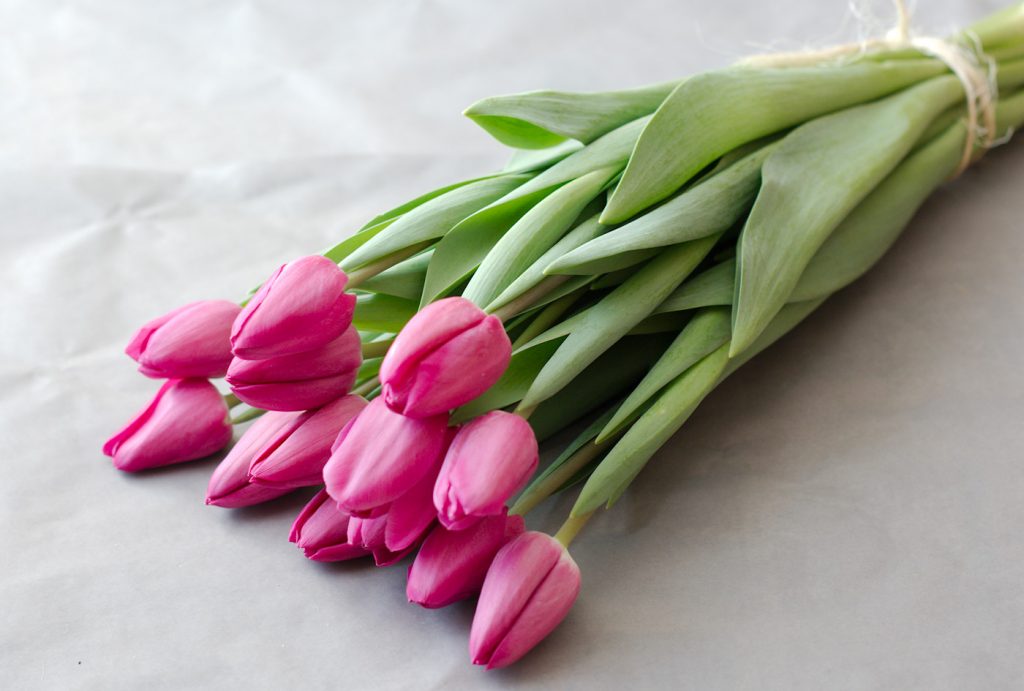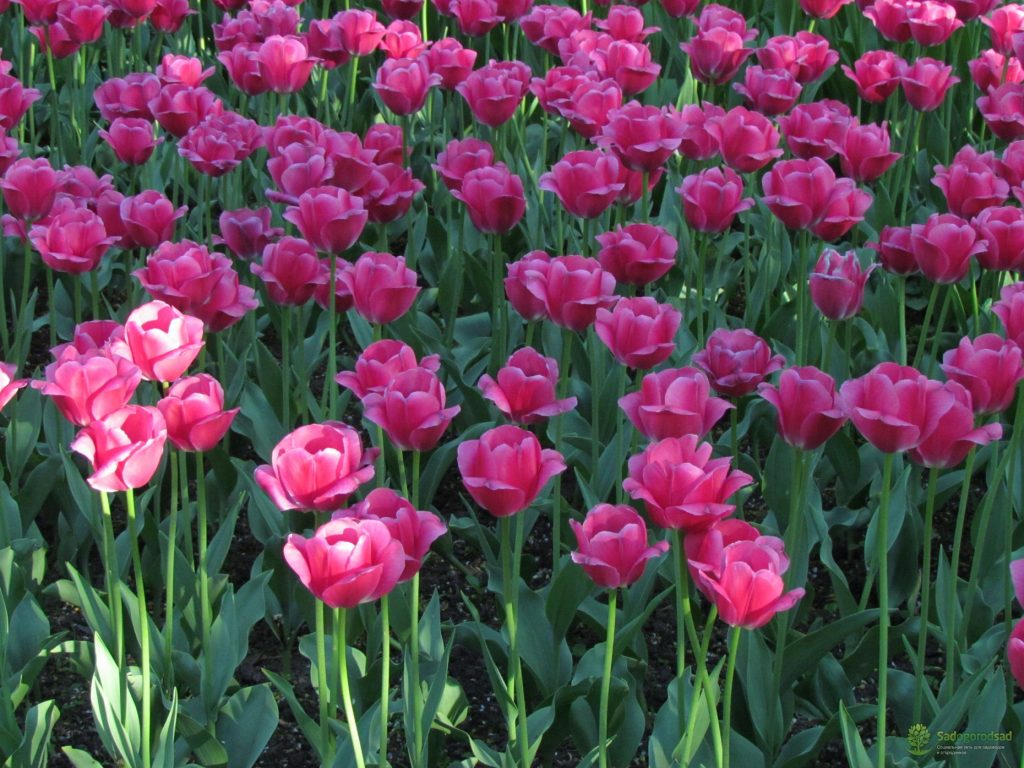Tulip Barcelona - amazingly beautiful flower
Tulip Barcelona is the result of Dutch selection. Belongs to the Triumph class. It is grown outdoors and in greenhouse conditions. A characteristic feature of the variety is its relatively high resistance to temperature extremes.

Barcelona tulip
Description of the variety
Barcelona, together with the varieties Canasta, Antarctica, Laptop, Match, is one of the subspecies recommended for early spring forcing in greenhouse conditions.
The flowering period is from late April to early May.
External parameters:
- stem up to 60-65 cm high;
- onion of medium diameter, about 10 cm;
- buds are formed by tightly pressed petals, length up to 7 cm, goblet shape;
- color is bright pink with a raspberry tint;
- sweetish aroma.
Landing features
For the successful cultivation of tulips, it is necessary to choose the right site, comply with the requirements for its illumination and plant it in a suitable soil according to the appropriate planting technology at a suitable time.
Timing
Recommended disembarkation dates are from September to October. The choice of the date depends on the region of cultivation.
Planting in open ground should be completed 3-4 weeks before the expected time of the onset of autumn frosts. Rooting takes place at a temperature not lower than 7 ° C.
Preparatory work
For the full disclosure of the buds, the flowers are planted in a sunny area, hidden from direct wind currents with a low passage of groundwater.
Tulips are not planted after potatoes, tomatoes and bulbous crops - they have common diseases. The frequency of changing the place of growth is once every 4-5 years.
The most suitable soils are loams, sandstones with high air permeability and moisture absorption with neutral or low acidity.
Previously, the site is dug up and fertilized - humus at the rate of 10 kg / m².
Planting material is purchased from trusted sellers or used independently. Before planting, the bulbs are disinfected by treating with a fungicide or a weak solution of potassium permanganate (potassium permanganate).
Technology
Wells are prepared 2-3 weeks before the planned planting, choosing the depth and width depending on the diameter of the planting material.

Tulip barcelona photo
Large bulbs are buried by 15 cm, small ones by 5-10 cm.The required distance is 10-20 cm.
Stages:
- a mixture of sod land and compost is laid out on the bottom of the holes;
- the fertilizer layer is covered with sand 1-2 cm thick;
- the bulbs are planted in the direction of the sharp part up;
- sprinkle with soil on top.
Care rules
Watering
The moisture-loving tulip is poured with warm water, ensuring the penetration of moisture to a depth of 30-35 cm. The regularity of the procedure depends on weather conditions and is established as the surface layer of the soil dries out.
The optimal mode is up to 3 times during the growing season, 50 liters for each m².
A day after watering, the soil is loosened to increase aeration of the soil layers, destroying the earthen crust, which prevents the free passage of air to the corn roots.
Top dressing
Barcelona is fertilized 2-3 times per season:

Barcelona tulip photo
- in March, in order to activate the growth of green mass, urea containing nitrogen is introduced;
- at the flowering stage, fertilization with superphosphate is carried out, ensuring the supply of phosphorus.
Pruning and pre-winter preparation
Cropped Barcelona depending on the purpose of cultivation:
- to save the bulbs for later planting, the plants are cut, leaving 2 leaves and part of the stem;
- when grown without cutting, after flowering, the wilted bud and part of the shoot are cut off, preserving the green aboveground part for feeding the corn bulb;
- if the planting material does not need to be preserved, the tulip can be dug up along with the root tuber.
When the bulbs are dug up, they are stored for storage first in a warm room with a temperature of about 20 ° C-22 ° C, then transferred to cooler conditions - 12 ° C.
Flowers planted in autumn do not need insulation if they are grown in regions with warm and snowy winters. When planted in less favorable climatic conditions, a flower crop requires shelter with mulch - a peat mixture or compost.
Reproduction methods
The Barcelona variety is propagated by children, which are formed from the mother's bulb. They are dug out of the ground, sorted, inspected for rotten fragments and damage, and sent to storage in a dark, cool place before planting in the ground.

Tulips barcelona
Treatment of diseases and pests
The wrong place, violation of the timing and technology of planting become the reasons for the vulnerability of Barcelona to diseases and pests.
Among the most common diseases:
- Gray rot. It manifests itself in the form of yellow-gray mottling on foliage, deformation of stems and drying of buds. Spraying against the fungus is carried out with copper-containing preparations at intervals of up to 3 times with an interval of 10-15 days.
- White rot. Visible by the white bloom on the bulb. Leads to uneven germination. Sick specimens are dug up, and the resulting holes are sprinkled with wood ash.
- Variegatedness. The virus leads to a change in the color of the bud and the appearance of streak on the stem. Affected plants are removed.
Regular weeding is a good measure to prevent the development of infectious diseases and the dispersal of harmful insects.
Of the pests, the greatest danger for the tulip cultivar Barcelona is:
- Onion tick. Forms moves in the bulb, violating its integrity. The best way of protection is prevention - heat treatment of the planting material before planting and dusting with limestone.
- Medvedka. Damages root and stem. Traps are set against the pest around the perimeter of the flower bed and repellent plants are planted - mustard, marigolds and the like.
- Slugs and snails. They eat up the vegetative parts, violating the decorative effect. Harvest harmful insects by hand. They use wood ash powder against their penetration into the ground.

Tulips varieties barcelona
Testimonials
The Barcelona tulip variety was developed in Holland. Possesses increased resistance to temperature extremes and is suitable for growing in open and closed conditions.

